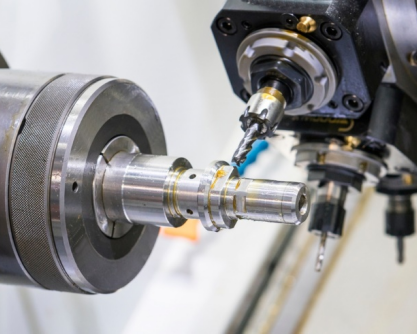What is Vacuum Casting
Vacuum casting is a manufacturing process used to create high-quality, detailed, and dimensionally accurate replicas or prototypes of original models. It involves the use of a vacuum to draw liquid material into a mold, which then hardens to form the desired part. This process is often used in industries such as automotive, aerospace, medical, and consumer products for rapid prototyping machining services and low-volume production.
Why Vacuum Casting
In our daily lives, we often apply plastic products, in general products, that use more thermoplastics, this plastic in industrial production, generally with thermoforming, can be shaped. However, in our product design, the appearance of some products needs to be heat and corrosion-resistant, these products need to use plastic and should have good thermosetting, the designer in the selection of materials, we to take into account the way the product is formed will be used in the vacuum casting process.

Vacuum Casting Mainly Usage
Vacuum casting is mainly used for prototype manufacturing, single-piece production, and small-batch production, and can replicate almost all the properties of the injection molding process. It is mainly used to mold two-component polyurethanes (PUR), which are widely used in different grades, colors, and hardnesses. Flexible silicone molds are machined directly from the mold and then vacuum cast to reproduce the product with properties very similar to those of mass-produced products. A full-color range is available. Can be as flexible and elastic as a thermoplastic elastomer (TPE) or as hard as acrylonitrile-butadiene-styrene (ABS).
Typical Applications for Vacuum Casting
Vacuum casting is widely used in the automotive, consumer electronics, consumer goods, and sports equipment industries. In addition to prototypes, vacuum casting is also used for injection molding of small quantities where expensive molds are not intended. In the automotive industry, applications include the production of various tubes, water tanks, air filter housings, radiator parts, lamp shades, chips, gears, and moving hinges. Consumer electronics applications include the manufacture of keyboards and housings for cell phones, televisions, cameras, players, audio systems, and computers.
- What Are the Applications of 4-Axis CNC Machining Services?September 14, 2024About 4-Axis CNC Machining ServicesIn 4-axis CNC milling, the fourth axis is added to the movement of the cutting tool, allowing it to rotate around the x-axis. Now, there are four axes: the x-axis, y...view
- How Precision Tool Manufacturing Can Improve EfficiencyMarch 19, 2024In modern industrial manufacturing, precision tools play a vital role. With the intensification of market competition, improving the efficiency of precision tool manufacturing has become an urgent nee...view
- Food for Thought: Custom Prototyping in Culinary InnovationNovember 23, 2023Culinary innovation is an ever-evolving field that constantly seeks to push boundaries and tantalize our taste buds with new and exciting flavors. With the rise of the food and beverage industry, chef...view
- Development History Of Injection MoldingFebruary 27, 2023Introduction to Injection Molding Injection molding is also known as injection molding, which is a kind of injection and molding method. The advantages of injection molding method are fast production ...view
- Efficiency Redefined: The Impact of High Precision Tools in IndustriesJanuary 5, 2024In the ever-evolving landscape of industrial manufacturing, the pursuit of efficiency is paramount, and at the core of this quest lies the transformative impact of high precision tools. These sophisti...view
- Automotive Evolution: Enhancing Vehicle Design with Urethane Casting ServicesJanuary 5, 2024The world of automotive design has continuously evolved to meet the demands of consumers seeking high-performance vehicles. In recent years, urethane casting services have emerged as a vital tool for ...view



